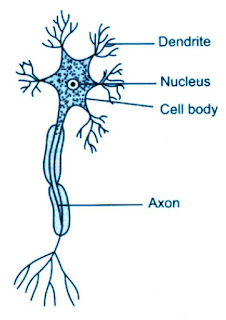CBSE Physics Class IX (9th) Motion Part 2
CBSE Physics Class IX (9th) Motion Part 2
Uniform and Non-uniform Motion
Uniform Motion:
When a moving body always travels equal distance in equal interval of time,
then its motion is called uniform motion.
Example: If a car covered 5km distance in every hour, then
its motion is called uniform motion.
Non-uniform motion:
When a body travels different distances in equal interval of time, then its
motion is called non-uniform motion.
Example: It a covered 5km in first hour then 10 km in second
hour then 12 km in third hour. So, its motion is called non-uniform motion.
Speed:
The distance traversed by a body in unit time is called its
speed.
This distance can be traversed in straight line or in curved
path.
If ‘S’ distance traversed by a car in time ‘t’ then,
Distance traversed by the car in unit time = S/t
Therefore, Speed of the car = S/t
i.e. Speed = traversed distance/ time
=
S/t ( where s= distance, t = time)
Speed is scalar quantity.
C.G.S and S.I unit of speed is cm/sec and m/sec
respectively.
Average Speed:
For a given interval of time, the ration of the distance
traversed and interval of time elapsed is the average speed.
Example: If an object travels x1 distance in time t1, x2
distance in time t2 and x3 distance in time t3
Then total distance traversed = x1+x2+x3
Total time
elapse = t1+t2+t3
Average speed =(Total distance traversed/ total time
elapsed)
= (x1+x2+x3)/ (t1+t2+t3)
C.G.S and S.I unit of average speed are cm/sec and m/sec
respectively.
Velocity:
The distance traversed by a body in a particular direction
in unit time is called its velocity.
That is , the rate of change of displacement is the velocity
of the body.
If ‘S’ be the displacement in time ‘t’
Then displacement in unit time = S/t
Therefore, velocity of the particle = V = S/t
Velocity = Displacement/ Time
Velocity has magnitude and time both. So it is a vector
quantity.
C.G.S and S.I unit of velocity are cm/sec and m/sec
respectively.
Uniform Velocity and Non-uniform Velocity:
Uniform Velocity:
When direction and magnitude of a moving object remain same then its velocity
is called uniform velocity.
Non-uniform Velocity:
When both direction and magnitude or any one of them change with time then its
velocity is called non-uniform speed.
Example: Motion of an object in circular path with uniform
speed is non-uniform velocity.
Average Velocity: Average
velocity is the total amount of distance from the starting point divided by the
amount of time passed to get to the final destination.
Total
Displacement(S)
Average
Velocity = ---------------------------------------
Total time (t)
Difference between Speed and Velocity:
Speed
|
Velocity
|
1.
The distance covered by an object in unit time
is called its speed.
2.
Scalar quantity.
3.
An object having uniform speed, may not have
uniform velocity.
|
1.The distance covered by an object in unit time in a particular
direction is called its velocity.
2. Vector quantity.
3. an object having uniform velocity must have uniform speed.
|
Acceleration:
When an object movers with gradually increasing velocity,
the rate of change of velocity with respect to time is called its acceleration.
Acceleration(f) = (change in velocity/ time)
= ( Final velocity – initial velocity) / time
Acceleration has both magnitude and direction. So, it is a
vector quantity.
C.G.S and S.I unit of acceleration are cm/secᶻ and m/secᶻ
respectively.
Uniform Acceleration and Non-uniform Acceleration:
Uniform Acceleration:
If the velocity of a moving body changes uniformly in equal interval of time,
then the body is said to have uniform acceleration.
Non-uniform Acceleration:
When the velocity of the body does not change uniformly in equal interval of
time, the acceleration is said to be non-uniform acceleration.
Retardation:
The rate of decrease of velocity with respect to time is
called retardation.
Retardation = (decrease in velocity/ time)
CBSE Physics Class IX (9th)
Motion Part 2
More Related Searches For you
Factorization of polynomials
Polynomials (CBSE) Class 9
Matter In Our Surroundings CBSE Class 9
Matter In Our Surroundings Solution of NCERT In Text Questions-Part-1
Matter In Our Surroundings (Solution of NCERT In Text Questions - part-2)
Diversity in Living Organism CBSE
Visit My Site Regularly For More New update of CBSE NCERT CLASS
More Related Searches For you
Factorization of polynomials
Polynomials (CBSE) Class 9
Matter In Our Surroundings CBSE Class 9
Matter In Our Surroundings Solution of NCERT In Text Questions-Part-1
Matter In Our Surroundings (Solution of NCERT In Text Questions - part-2)
Diversity in Living Organism CBSE
Visit My Site Regularly For More New update of CBSE NCERT CLASS

